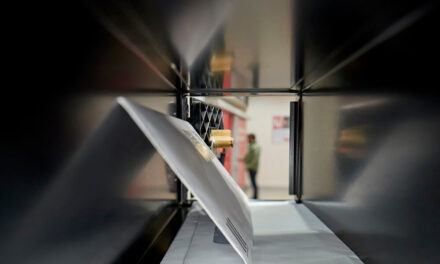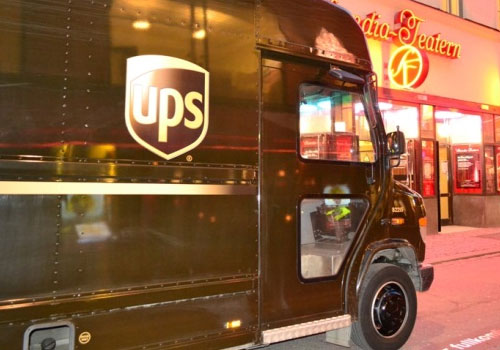
Direct drive the cool solution for direct deliveries?
Direct drive the cool solution for direct deliveries?
Think you know how to keep your home-delivery vans refrigerated? It's a moving target, warns Sharon Clancy, who reports on a shift towards direct-drive systems
Grocery home deliveries may be a recent phenomenon, at least in their modern form, but keeping food at the right temperature in transit is a discipline as old as the hills. Any company taking on this market will inevitably find itself tapping into a long-standing and often complex reservoir of refrigeration engineering theory, practice and folk lore.
What makes this prospect doubly daunting is that transport refrigeration is a moving target. Even as the home delivery specialists refine the type of van that will suit their operation best, engineering and political pressures are prompting changes in the type of equipment on offer (see panel on page 36).
A notable consequence of these pressures has been a rise in interest in direct-drive systems for truck and van refrigeration systems. To understand this, you have to delve a little way into history. In the main, refrigeration systems on vehicles of over 3.5 tonnes gross have tended to be powered by their own self-contained diesel engine, usually mounted on the front of the body or trailer above the cab. There are alternative systems such as "rechargeable" eutectic plates, which have proved popular on some multi-drop operations, but they impose a weight penalty.
On smaller vans, engine-driven refrigeration units from an earlier generation are in fact already established, although by no means universally accepted; but until lately performance has limited their appeal for larger trucks. Now a new generation of direct-drive systems is emerging. These can match diesel-engined units on performance, even in the bigger-bodied 7.5-tonne trucks; and on light trucks they give the operator more flexibility to specify exactly the system needed for the food being carried and the operation.
Considerable advantages
Direct-drive units now appear to have overcome most of their previous technical drawbacks, and their advantages are considerable: lower total vehicle emissions, quieter operation, reduced weight and lower running costs.
Direct-drive refrigeration units take their power either directly from the crankshaft of the vehicle's own engine, or from an engine-driven alternator. There is no separate diesel engine for the refrigeration unit hence the beneficial effect on noise, pollution and running costs.
The main drawback is that the refrigeration system only works work when the vehicle engine is running. So on some stop-start operations, either the vehicle engine has to be left running all the time (not good for fuel consumption or pollution levels), or the unit struggles to keep the box temperature at the correct level (not good for the product being carried). This has limited the appeal of these systems in the past, typically to 3.5-tonners on chill-temperature operations.
However, technical improvements in condensers and evaporators, and the introduction of electronic control units, have now boosted the performance of direct-drive systems. Electronics help maintain closer temperature control, as has the introduction of gas-heating systems to help warm up the air during especially cold weather (and thus to protect chill goods needing temperatures of plus 5 or plus 8 deg C). Condensers are more powerful, which increases their capacity, and the evaporators inside the bodies are much slimmer, so they intrude less into the load space.
The latest generation of compressors is more robust and better able to cope with being mounted in the inhospitable environment of the vehicle's engine compartment. Reliability has improved too, thanks to better waterproofing; and capacities have increased, so the unit does not have to work as hard.
Home and retail delivery
In the past year Carrier and Thermo King, the European market leaders in truck refrigeration, have each introduced new direct-drive systems, both for the 3.5-tonners that are the mainstay of the burgeoning food home delivery market, and for the larger boxes on 7.5-tonne trucks, which serve as workhorses on multi-drop delivery work to urban retail outlets and restaurants. They are also exactly the class of vehicle facing tougher restrictions in the next few years on permitted noise and engine emissions.
Both the Carrier Xarios and Thermo King V-series are modular ranges, which means that condensers, evaporators and control systems can be mixed and matched to produce the best solution for a particular vehicle, body size and operation. Carrier has even set up a separate division, Carrier Advantage, specifically for direct-drive sales. This has its own Web site (www.carrieradvantage.com) giving advice on matching units to body size, and employs dedicated installation and service engineers. Sales and marketing manager Nark Howell points out that a direct-drive Xarios 500 unit on a 7.5-tonner saves 300kg in weight compared with the diesel-driven Supra unit. "The servicing costs are half those of a diesel-powered unit," he maintains.
Carrier's Xarios range offers units for various truck sizes in single- and multi-temperature versions. One of its higher-range models, the 400, shows the flexibility of the modular approach. As well as working on a single box, it can provide extra capacity on 3.5-tonne gross multi-drop dual-compartment operations. This summer, the range will be completed with the introduction of two further units, replacing the previous Integra model for small vans with box sizes up to 22 cu metres.
Usefully, the Xarios electronic control unit records both engine hours and time spent on electric standby. Carrier says guessing the number of standby hours can lead to under-maintenance and unscheduled breakdowns. On multi-temperature vehicles the microprocessor operates on either automatic or priority mode. This last option tells the controls to manage the temperature in a particular compartment first, rather than share the available cooling equally between all of them.
Thermo King's V-series is aimed squarely at the supermarket and Internet home delivery market. The model for small vans and trucks is the first of the new modular range. Five other versions are also being offered, all with ultra-slim evaporators (only 130 mm or 155 mm in height) to preserve maximum space for loads. All models can operate on 12- or 24-volt DC, and the electric standby option can be retrofitted should operational circumstances change. Tesco has specified the range on the latest batch of dual-temperature Mercedes-Benz Sprinter vans to join its home delivery fleet, now 600 strong.
Later this year the range will be expanded to include new models which combine bi-temperature capability with a heat facility.
Scroll compressors
Higher up the weight range, Thermo King is using "scroll compressors" on its latest direct-drive units for large trucks. Scroll compressors get their name from the fact that the gas is compressed by passing it through a coil or scroll. Rival manufacturer Frigoblock also uses them on some units. Thermo King claims they have 87 per cent fewer moving parts, and are more fuel-efficient, quieter, and more reliable than conventional reciprocating compressors.
Another manufacturer, Hubbard, has won a deserved reputation as an innovator in small-vehicle refrigeration systems, but is now broadening its product portfolio to include a system that offers a low-carbon emission alternative to diesel power. Hubbard is partnering BOC in the upgrading of the nitrogen-gas Polarstream 2000 refrigeration system, for which it has developed electronic control systems. Advantages include completely silent running and fast temperature pull-down times. The company has also become the UK distributor for the Dutch-built Govet HG range of alternator-driven units for larger trucks, branding them HG units.
Multi-drop frozen food and ice-cream distribution is one of the most challenging activities when it comes to drawing up vehicle specifications. The need for frequent door openings is incompatible with maintaining box temperatures of minus 18 or 25 deg C to preserve product integrity. Eutectic-plate refrigeration systems are popular for this work, despite their weight, because the plates continue to chill the box even when the engine is not running. On 3.5-tonners, though, that weight is unacceptable. Now Frigoblock has developed a new unit for 3.5-tonners doing multi-drop frozen deliveries. The unit has a higher-capacity alternator capable of pulling down box temperatures to minus 35 deg C. This lower temperature might seem excessive, Frigoblock admits, but it provides a temperature cushion during loading operations. "You cool the box to minus 35 deg C overnight to compensate for the temperature rise during loading," the company's John Winter explains. "When the vehicle sets off, the box temperature is well below the minimum minus 18 or minus 25 deg C required by the product."
Neater installation
Another trend on car-derived and panel vans is to hide the roof-mounted condensers unit in the engine compartment. This is only possible on vans where there is enough space between the radiator and the front of the vehicle to put the heat-exchanger, but the end result is a neater installation; there's no roof-top condenser to spoil the sleek lines of the van. Hubbard's Alpha 380 unit is one example, while Italian manufacturer Zanotti has developed a split-configuration direct drive unit for van in which the condenser fits underneath the floor.
Even bodybuilders are adjusting to the specific demands of the home-delivery operators. Gray and Adams, the Scottish manufacturer best known for its temperature-controlled trailers, is producing box bodies and insulated linings for panel vans at a separate small-vehicle division at Doncaster. Waitrose and Dawn group are among its customers.
GRP has unveiled its Gold Response scheme. GRP was one of the pioneers of removable linings for panel vans; they were originally developed because dry-freight vans have better residual values than insulated ones. Gold Response takes the concept a step further. On top of a generous three-year warranty on the body and refrigeration equipment (12 months is still typical), GRP undertakes either to replace the lining with a new one for its second owner, prolonging its life, or to convert the van back to dry-freight use.
As the food home delivery market matures, so will the vehicles used in the fulfilment process. Whether 3.5-tonners retain their position as the vehicle of choice remains to be seen. One thing is certain, though; direct-drive refrigeration units are now here to stay. The drive towards greener vans
Under the Government's Clean Air Act, by 2005 some cities must implement strategies that will demonstrably improve urban air quality in designated zones. Many schemes are still at the consultation stage, but there is a strong possibility that charging could be introduced for vehicles entering these low-emission zones, and that access might be limited to vehicles that comply with tough emission and noise limits.
A likely minimum standard for truck engines, for example, is compliance with Euro 2 emission limits, plus the fitting of a catalytic converter in the exhaust system to reduce particulate emissions further. Operators may also have to demonstrate that refrigeration units do not exceed proscribed noise limits.
These developments are also increasing the appeal of gas-fuelled vehicles, and of alternative power sources to diesel engines for refrigeration units. Engine-drive units have been used on some smaller vans, and a further approach on larger trucks is to use an alternator-driven unit. German manufacturer Frigoblock has championed this concept for many years on both environmental and whole-life cost grounds. Compressed natural gas and solar power have also been used as alternative power sources.















